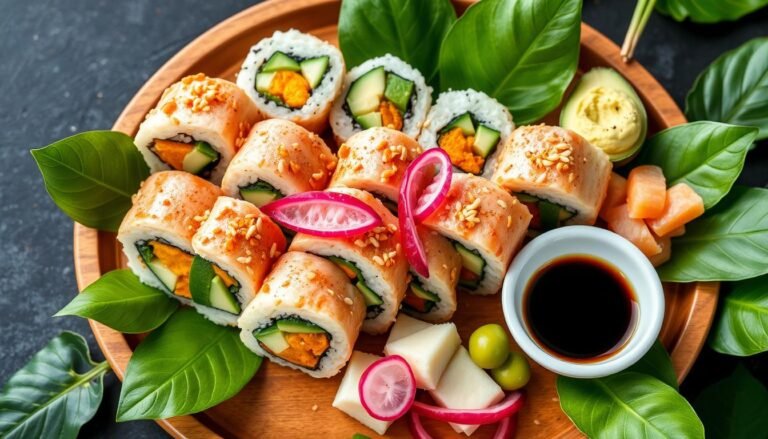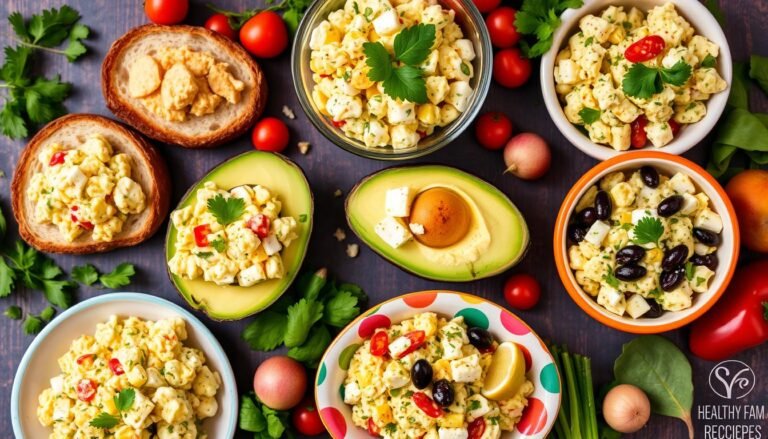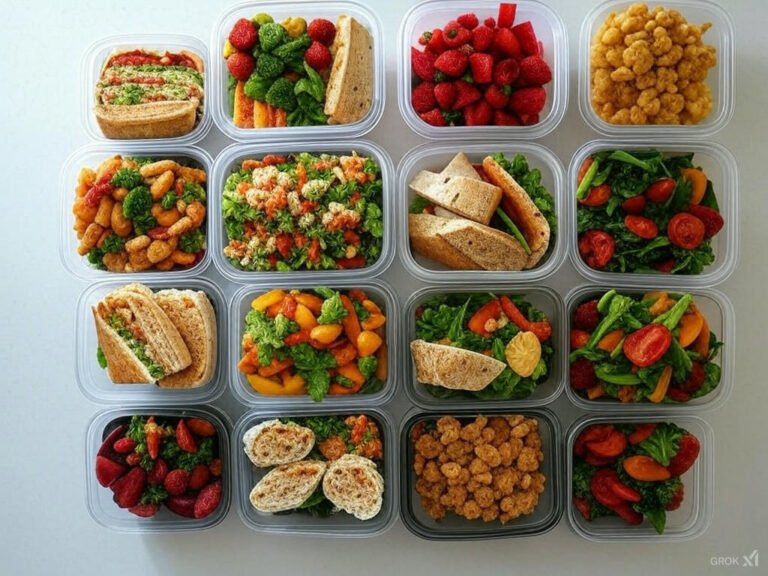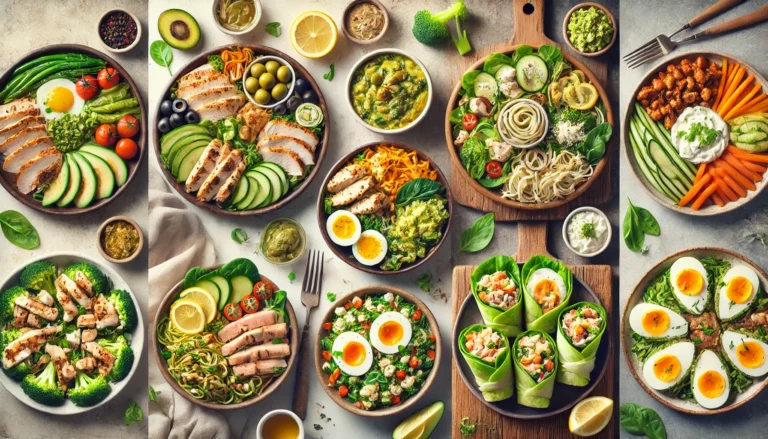Tuna Or Salmon Cakes: How To Create Spectacular Crispy Edges

Table of Contents
Looking for a tasty and quick meal? Tuna or salmon cakes are the perfect choice! These homemade fish patties turn simple ingredients into crispy, golden treats. They’re great for any time, whether you’re in a rush or hosting a fancy dinner.
Fish cakes are more than just food. They’re a journey through flavors. By mixing fresh or canned fish with herbs, spices, and binders, you can make dishes that rival restaurants. The secret is finding the right mix of crispy outside and soft, flavorful inside.
Key Takeaways
- Tuna or salmon cakes are versatile protein-rich meals
- Easy to prepare with minimal cooking skills
- Can be made with tuna or salmon
- Suitable for meal prep and quick dinners
- Customizable with various herbs and spices
- Nutritious alternative to traditional protein options
What Are Tuna and Salmon Cakes?
Tuna or salmon cakes lovers rejoice! Tuna and salmon cakes are delightful culinary creations. They turn simple fish into mouthwatering patties. These easy fish cake recipes are perfect for home cooks looking to whip up healthy fish cakes with minimal effort.
Fish cakes are versatile seafood patties. They are made from either canned or fresh fish. They are blended with delicious ingredients that create a satisfying meal. Let’s dive into the world of these tasty seafood bites!
Definition and Ingredients
At their core, fish cakes are a simple yet elegant dish. For an easy fish cake recipe, you’ll typically need:
- Fresh or canned fish (salmon or tuna)
- Binding ingredients like eggs and mayonnaise
- Breadcrumbs (panko or gluten-free options)
- Fresh herbs and seasonings
- Aromatics like green onions and garlic
Key Differences Between Tuna and Salmon
While both are delicious healthy fish cakes, tuna and salmon offer unique characteristics:
| Characteristic | Tuna Cakes | Salmon Cakes |
|---|---|---|
| Protein Content | High (12g per patty) | High (12g per patty) |
| Flavor Profile | Mild and firm | Rich and soft |
| Recommended Quantity | 3 (5-ounce) cans | 3 (6-ounce) cans or 1 pound fresh |
“The secret to great fish cakes is using fresh ingredients and seasoning them perfectly!” – Seafood Chef
Whether you choose tuna or salmon, these healthy fish cakes offer a nutritious and delicious meal option. They can be prepared quickly and enjoyed by the whole family.
Health Benefits of Tuna or Salmon Cakes
Healthy fish cakes are more than just tasty. They’re full of important nutrients. Your protein-packed seafood patties offer many health benefits.
Seafood cakes are a nutritional powerhouse. They give you key health benefits. The American Heart Association says to eat two servings of fatty fish a week for heart health.
Nutritional Profile of Tuna Cakes
Tuna cakes are great for those who care about their health. A serving has:
- Approximately 25 grams of lean protein
- Around 237 calories per serving
- Essential vitamins including vitamins B12 and D
- Significant selenium content
Nutritional Profile of Salmon Cakes
Salmon cakes are as nutritious as tuna cakes. They offer a different but impressive nutritional profile:
| Nutrient | Amount per Serving |
|---|---|
| Protein | 14-22 grams |
| Calories | 226 |
| Omega-3 Fatty Acids | 1.5 grams |
| Vitamin D | 14 micrograms |
“Seafood cakes transform nutrient-dense fish into delectable, health-supporting meals.” – Nutrition Expert
Both tuna and salmon cakes offer powerful nutritional benefits. They are smart choices for tasty, protein-rich meals that boost health and wellness.
How to Make Perfect Tuna Cakes
Making tasty homemade fish patties is simpler than you think. An easy fish cake recipe can turn canned tuna into a delicious meal. It’s both healthy and fulfilling.
To make tuna cakes, you need a few ingredients and some basic steps. Let’s explore how to make these tasty seafood bites.
Step-by-Step Tuna Cake Recipe
First, gather these ingredients:
- 15 ouncesof canned tuna in Springwater
- 2 large eggs (beaten)
- 3 tablespoons mayonnaise
- 1 cup Panko bread crumbs
- 1/4 cup fresh parsley, finely chopped
- 1 teaspoon Worcestershire sauce
- Salt and pepper to taste
Here’s how to make your homemade fish patties:
- Drain the tuna well
- Mix tuna with eggs and mayonnaise
- Add bread crumbs and seasonings
- Shape into tight patties
- Fry in a pan until golden
Tips for the Best Texture
Getting the right texture is key for tasty tuna cakes. Chill the patties for 15-20 minutes before cooking to help them hold their shape. Cook in a non-stick skillet on medium heat for 3-4 minutes on each side.
“The secret to great tuna cakes is in the preparation and handling of the ingredients.” – Seafood Cooking Expert
| Nutritional Information | Per Serving |
|---|---|
| Calories | 90 |
| Protein | 9g |
| Cooking Time | 25 minutes |
Your homemade fish patties are great for lunch, a quick snack, or dinner. Try different seasonings to make it your own!
Delicious Salmon Cake Recipes
Explore tasty seafood recipes with these mouthwatering salmon cake variations. They will make your dinner routine exciting. Crispy seafood fritters are about to become your new favorite meal prep option!
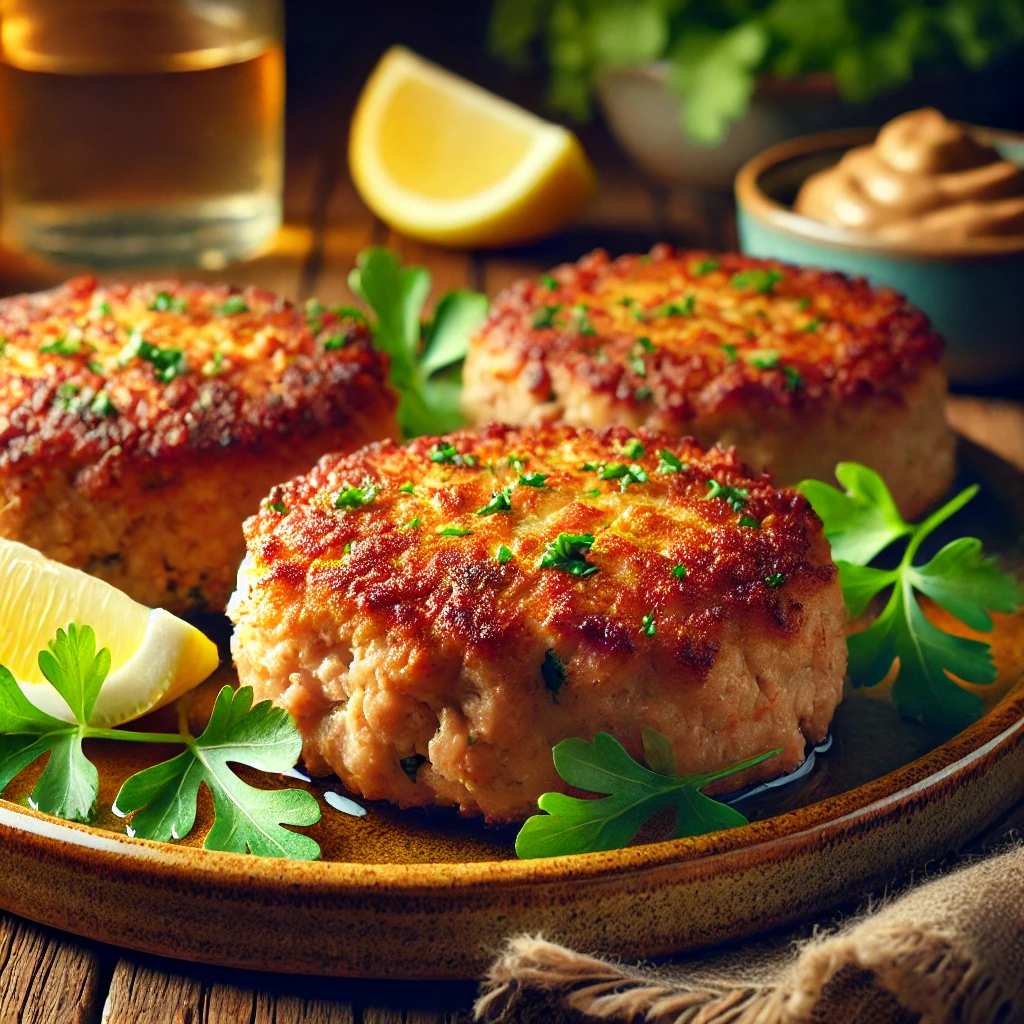
Salmon cakes are a versatile and nutritious dish. They can elevate your home cooking game. With a rating of 4.99 out of 5, these recipes are guaranteed to impress your family and friends.
Classic Salmon Cake Recipe
Get ready to create the perfect salmon cakes with this foolproof recipe. Here’s what you’ll need:
- 1 can of high-quality salmon
- 2 eggs
- 1/4 cup mayonnaise
- 1 tablespoon Dijon mustard
- Minced garlic
- Kosher salt and black pepper
- Dried thyme
- Fresh parsley
Preparation is quick and easy. You’ll spend just 15 minutes prepping and 15 minutes cooking. This results in approximately 9 delicious salmon cakes. Each serving contains about 226 calories and provides 14 grams of protein.
Spicy Salmon Cake Variation
Kick your crispy seafood fritters up a notch with a spicy twist!
- Add cayenne pepper for heat
- Mix in sriracha sauce
- Incorporate red pepper flakes
Cooking tips for perfect salmon cakes:
- Use olive oil for frying
- Cook for 2 minutes per side
- Aim for a golden-brown exterior
Pro tip: These salmon cakes can be made ahead and stored in the refrigerator for 3-4 days or frozen for up to 3 months!
| Nutrition Facts (Per Serving) | Amount |
|---|---|
| Calories | 280 |
| Protein | 14g |
| Carbohydrates | 1g |
| Fat | 22g |
Reheat your salmon cakes at 350°F for 10-15 minutes. This will maintain their crispy texture and delicious flavor!
Pairing Options for Tuna or salmon cakes
Improving your seafood cake experience is more than just the cake. The right sides and sauces can make your meal amazing. When looking for the best fish cake ideas, pairing is an art that boosts flavors and makes your meal unforgettable.
Choosing the right sides and sauces for seafood cakes is important. It helps bring out the best in your fish cakes. With the right choices, your meal can become truly special.
Ideal Side Dishes for Tuna Cakes
Tuna cakes are best with fresh, light sides. Here are some tasty options:
- Crisp green salad with citrus vinaigrette
- Roasted vegetable medley
- Herb-infused rice pilaf
- Quinoa salad with fresh herbs
- Lemon-garlic roasted asparagus
Perfect Sauces for Salmon Cakes
Make your salmon cakes even better with these sauces:
- Lemon-Dill Aioli: A classic choice for salmon
- Spicy Sriracha Mayo: Adds a bold kick
- Classic Tartar Sauce: Always a hit
- Chipotle Cream Sauce: For those who love bold flavors
“The right sauce can elevate a good seafood cake to an extraordinary culinary experience.” – Culinary Chef
When picking sides and sauces for your seafood cakes, remember to keep it balanced. Choose light, fresh sides and sauces that match your tuna or salmon cakes. This will make your meal both tasty and elegant.
Storing and Freezing Tips
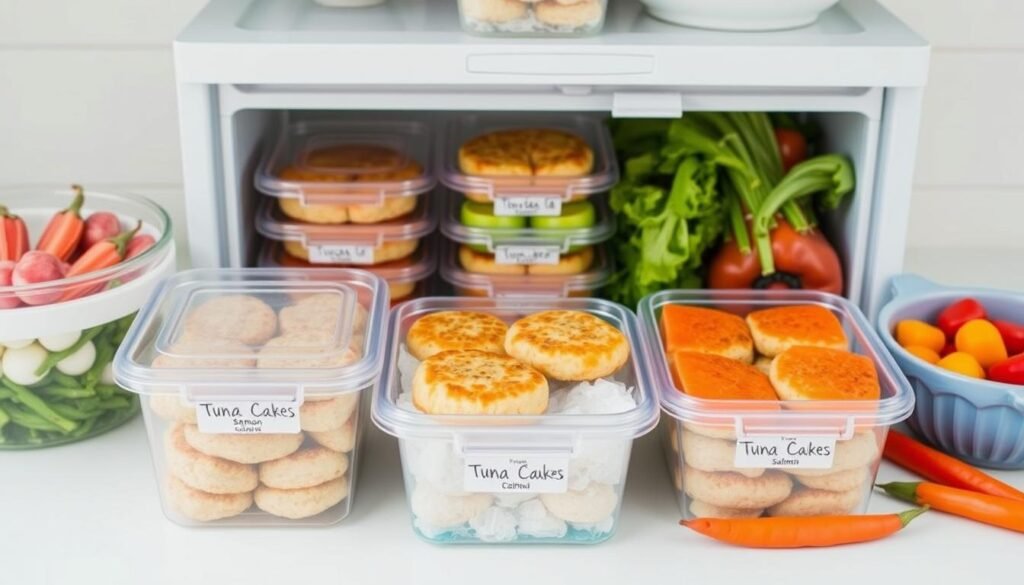
Keeping seafood cakes fresh is key. Whether you made tuna or salmon cakes, knowing how to store and freeze them is important. This way, you can enjoy them at their best.
Best Practices for Refrigeration
Seafood cake storage needs careful attention. This keeps them fresh and safe. Here are some tips for refrigeration:
- Store cooked seafood cakes in an airtight container
- Refrigerate within 2 hours of cooking
- Keep in the fridge for up to 2-4 days maximum
- Use shallow containers to promote even cooling
Mastering Freezing Fish Cakes
Freezing fish cakes is a great way to keep them for later. Here’s how to freeze seafood cakes:
- Cool cooked seafood cakes completely to room temperature
- Place cakes on a parchment-lined baking sheet
- Freeze individually until solid (about 2 hours)
- Wrap each cake in plastic wrap
- Store in a freezer-safe bag or container
Pro tip: Properly frozen seafood cakes can last up to 3 months without losing quality.
Reheating Frozen Seafood Cakes
| Method | Temperature | Time |
|---|---|---|
| Oven | 350°F | 10-15 minutes |
| Microwave | 50% power | 1-2 minutes |
“Proper storage is the secret to maintaining the delicious taste of your seafood cakes!” – Culinary Expert
By following these tips, your homemade seafood cakes will stay delicious and safe. Enjoy them whenever you’re ready.
Dietary Considerations for Seafood Cakes
Enjoying healthy fish cakes doesn’t mean you have to give up on your dietary needs. Whether you’re gluten-free or on a low-carb diet, there are tasty options for everyone.
Knowing about dietary restrictions helps make seafood cakes that are both healthy and tasty. The right ingredients can turn old recipes into meals that fit different nutritional needs.
Gluten-Free Seafood Cake Options
Making gluten-free healthy fish cakes is simpler than you might think. Swap out traditional breadcrumbs for other binders that add taste and texture:
- Almond flour
- Crushed gluten-free crackers
- Coconut flour
- Ground nuts
Low-Carb Seafood Cake Variations
If you’re watching carbs, there are exciting low-carb seafood cake options. Try these swaps:
- Ground pork rinds as a binder
- Finely chopped nuts for crunch
- Egg-based mixtures for cohesion
Pro tip: Always check ingredient labels to ensure complete dietary compliance.
“Healthy eating is about making smart ingredient choices that support your nutritional goals.” – Nutrition Expert
Nutritional Considerations
| Dietary Approach | Key Modifications | Nutritional Benefits |
|---|---|---|
| Gluten-Free | Alternative flour binders | Reduces inflammatory responses |
| Low-Carb | Eliminate traditional breadcrumbs | Supports weight management |
| High-Protein | Increase seafood content | Enhances muscle maintenance |
Adapting seafood cake recipes to fit your diet doesn’t mean losing flavor. With the right ingredients and methods, you can enjoy healthy, tasty meals that meet your nutritional goals.
Serving Suggestions for Entertaining
Make your seafood appetizers stand out with a creative presentation. Turn simple seafood cakes into stunning dishes. This requires imagination and smart plating.
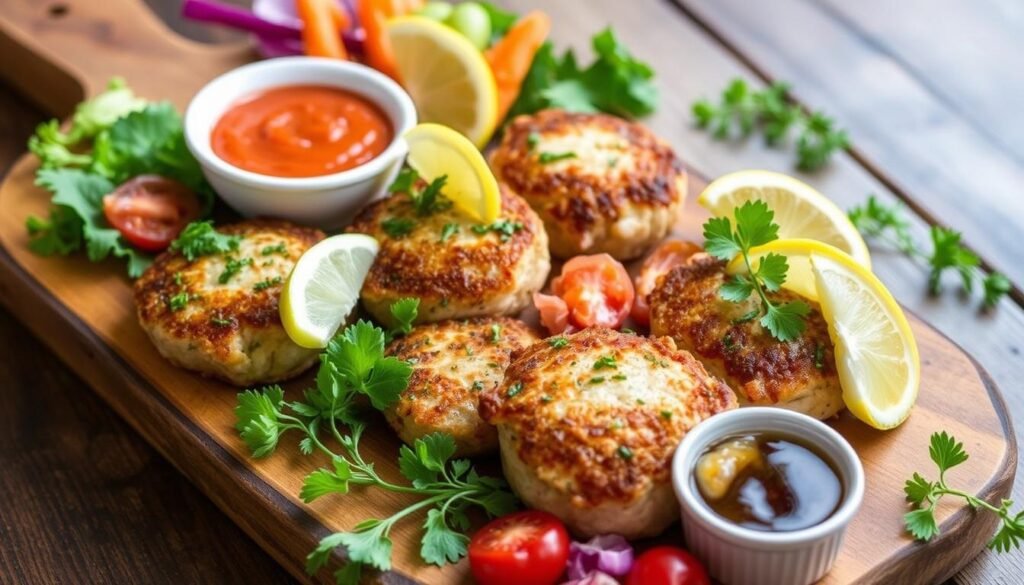
Creative Plating Strategies
When you’re hosting, your appetizers should get extra attention. Try these unique serving ideas:
- Create bite-sized seafood cakes for easy nibbling
- Use elegant ceramic or slate platters for a sophisticated display
- Arrange cakes in geometric patterns for visual interest
- Incorporate height variation to make presentations more dynamic
Garnishing for Visual Appeal
Take your fish cake presentation to the next level with garnishes. Choose fresh, vibrant ingredients that match the seafood’s taste:
| Garnish Type | Visual Impact | Flavor Enhancement |
|---|---|---|
| Microgreens | Delicate texture | Subtle herbaceous notes |
| Edible flowers | Colorful accent | Mild floral undertones |
| Citrus zest | Bright color | Tangy flavor profile |
Pro tip: Remember that people eat with their eyes first. A beautifully presented seafood appetizer creates anticipation and excitement before the first bite.
For an elegant touch, drizzle complementary sauces around the cakes. Use squeeze bottles for precise, artistic sauce designs. This will make your fish cake presentation look like it’s from a restaurant.
Tuna vs. Salmon: Flavor Profiles
Seafood lovers know tuna and salmon taste different. Knowing their unique flavors can make cooking more fun.
Exploring seafood cakes means trying two special proteins. You’ll notice how each tastes unique.
Exploring Tuna’s Taste Landscape
Tuna tastes mild and slightly salty. It has a firm texture. You’ll find:
- Clean, lean taste with minimal fishiness
- Ability to absorb surrounding seasonings
- Subtle umami undertones
“Tuna is like a culinary blank canvas, ready to be transformed by your favorite spices and herbs.”
Discovering Salmon’s Unique Flavor Characteristics
Salmon has a richer, more complex taste. Wild-caught salmon is especially prized for its buttery, complex taste:
- Slightly sweet and fatty profile
- Rich, robust flavor
- Tender, delicate texture
Looking at nutrition, tuna has 132 kcal per 100g with 28.0g of protein. Salmon has 206 kcal and 22.0g of protein. Each fish offers a unique taste.
Popular Restaurants Serving Seafood Cakes
Looking for the best seafood restaurants? Check out local spots famous for tuna and salmon cakes. Coastal areas have top places that make these dishes unforgettable.
Waterfront restaurants in San Diego, Hawaii, and the Gulf Coast are great for tuna cakes. They use fresh tuna from the sea, making delicious cakes with local flavors. Fishing towns offer the most genuine and tasty seafood cake experiences.
Must-Try Places for Tuna Cakes
Seafood fans should visit famous fish cake spots in coastal cities. The Pacific Northwest and California have amazing restaurants. They turn high-quality tuna into crispy, tasty cakes.
Look for places that use fresh tuna and offer creative recipes. This way, you get to enjoy the fish’s natural taste.
Noteworthy Salmon Cake Locations
Salmon cake lovers should check out Alaska, Washington, and Oregon. Local restaurants make dishes with fresh Pacific salmon. They use local ingredients and traditional cooking methods.
Whether you want a classic salmon cake or something new, these places have great options. They offer some of the best seafood dining experiences.
FAQ
What are the main differences between tuna and salmon cakes?
Tuna cakes are milder and firmer, often made with canned tuna. Salmon cakes are richer and can use canned or fresh salmon. Tuna tastes neutral, while salmon is slightly sweet.
How long can I store homemade seafood cakes?
Store them in an airtight container in the fridge for 3-4 days. Freeze cooked cakes for up to 3 months. Wrap each cooled cake in a freezer bag.
Are seafood cakes a healthy meal option?
Yes, they are nutritious. Tuna cakes have about 25g of protein and 237 calories. Salmon cakes have 14g of protein and 226 calories. They’re full of omega-3s and vitamins.
Can I make gluten-free seafood cakes?
Absolutely! Use almond flour, gluten-free crackers, or coconut flour instead of breadcrumbs. Make sure all ingredients are gluten-free for a tasty gluten-free dish.
What are the best sides to serve with seafood cakes?
Tuna cakes go well with green salads, roasted veggies, or rice pilaf. Salmon cakes pair with roasted asparagus, cauliflower, or fresh salads. Add tartar sauce, lemon-dill aioli, or sriracha mayo for extra flavor.
How do I prevent my seafood cakes from falling apart while cooking?
Chill the patties in the fridge for 30 minutes before cooking. Use fine flake fish and enough binding ingredients like eggs and breadcrumbs. Cook on medium heat and don’t move the cakes too much.
Can I make seafood cakes ahead of time?
Yes, they’re great for meal prep. Prepare the patties up to a day before and refrigerate. They can also be fully cooked and reheated later, perfect for quick meals or parties.
Source Links
- How To Make Salmon Cakes – https://soufflebombay.com/how-to-make-salmon-cakes/
- Easy Baked Salmon Cakes (Salmon Patties) to Share with the Kdis – https://www.yummytoddlerfood.com/wild-salmon-cakes/
- Salmon Patties (Salmon Cakes) – Downshiftology – https://downshiftology.com/recipes/salmon-patties/
- Easy Tuna Patties (Tuna Cakes!) – https://www.acouplecooks.com/tuna-patties-cakes/
- These Are the Healthiest Types of Seafood, According to an RDN – https://www.realsimple.com/food-recipes/recipe-collections-favorites/healthy-meals/healthiest-seafood
- Health Benefits of Seafood – https://fultonfishmarket.com/blogs/articles/health-benefits-of-seafood?srsltid=AfmBOopbAGmNMZ0Rs7dUJT-I1P5jiexUTWIjpZ4oifmDbjyounsCyiOn
- Is salmon or tuna healthier? There’s 2 major nutritional differences, dietitians say – https://www.today.com/health/diet-fitness/salmon-vs-tuna-rcna171831
- 10-Minute Tuna Patties {Tuna Cakes} – The Big Man’s World ® – https://thebigmansworld.com/curried-tuna-patties/
- Easy Tuna Patties Recipe – https://alldayidreamaboutfood.com/tuna-patties/
- Easy Salmon Cakes – Healthy Recipes Blog – https://healthyrecipesblogs.com/salmon-cakes-recipe/
- Salmon Cakes Recipe – Once Upon a Chef – https://www.onceuponachef.com/recipes/salmon-cakes.html
- 25+ Sides for Fish Cakes – https://www.platingsandpairings.com/what-to-serve-with-fish-cakes/
- Tuna Cakes with Jalapeño and Cilantro – https://tasteandsee.com/tuna-cakes/
- Salmon Patties – https://www.wellplated.com/salmon-patty-recipe/
- Easy Tuna Patties – Healthy Recipes Blog – https://healthyrecipesblogs.com/tuna-cakes/
- Healthy Tuna Diet – https://globalseafoods.com/blogs/news/healthy-tuna-diet?srsltid=AfmBOopWZheY_gZcXCqUwKwEHklmTCd1vFCHyZa90YLolBb79WJsvoeD
- Healthy Fish to Eat – https://www.hopkinsmedicine.org/health/wellness-and-prevention/healthy-fish
- Is Seafood Healthy? Benefits and Risks – https://chickenofthesea.com/blog/is-seafood-healthy/
- How to Turn a Can of Tuna Into Dinner – https://www.countryliving.com/food-drinks/g27496059/canned-tuna-recipes-ideas/
- 9 Easy And Delicious Canned Tuna Recipes – Tasting Table – https://www.tastingtable.com/1596713/canned-tuna-recipes/
- Salmon Patties (Salmon Cakes) – https://www.dimitrasdishes.com/salmon-patties-salmon-cakes/
- Why Canned Salmon Is Your New Favorite Protein Source – https://americantuna.com/blogs/news/why-canned-salmon-is-your-new-favorite-protein-source
- There are Salmon: The Ultimate Seafood Debate | Livelova – https://livelova.com/tuna-vs-salmon-a-guide-to-choosing-the-best-seafood/
- I Tried 12 Canned Salmon Brands—These Are the Best for Taste and Sustainability – https://www.eatingwell.com/best-canned-salmon-8724860
- Salmon Cakes (4 Ingredient Salmon Patties) – https://www.dinnerin321.com/salmon-patties/
- Ahi Tuna Cakes Recipe: Simple, Delicious, and Packed with Flavor – https://globalseafoods.com/blogs/recipes/ahi-tuna-cakes-recipe-simple-and-delicious?srsltid=AfmBOopBK6OpLyp00snNTlov53Yzl-ZgAk6cs4lRfRWJwM8IFVwdzTCh
- Why Southerners Love The Simplicity Of Classic Salmon Patties – https://www.southernliving.com/recipes/salmon-patties?srsltid=AfmBOooS99X3PXxyJkHOPPDyP9y1ylfZYA9EfIhqvqiy6Dx362Pye7Xn

